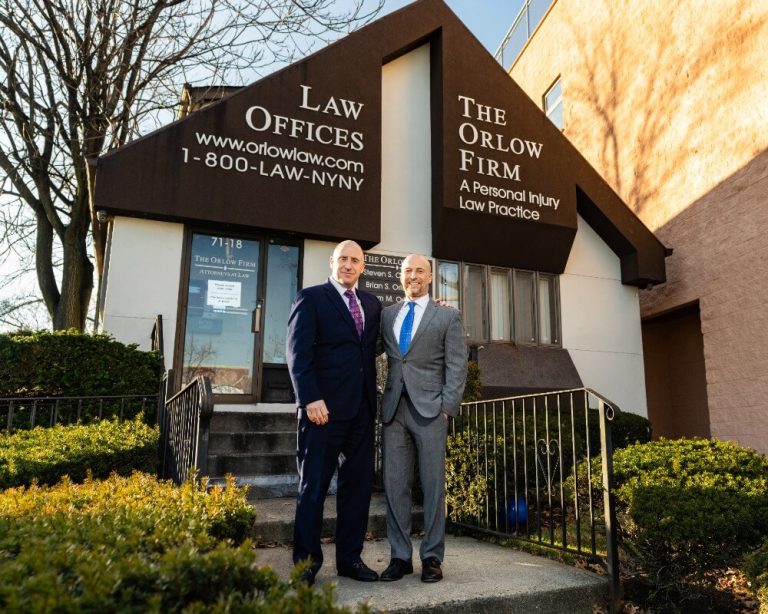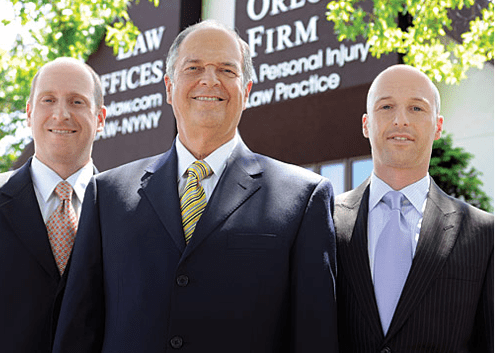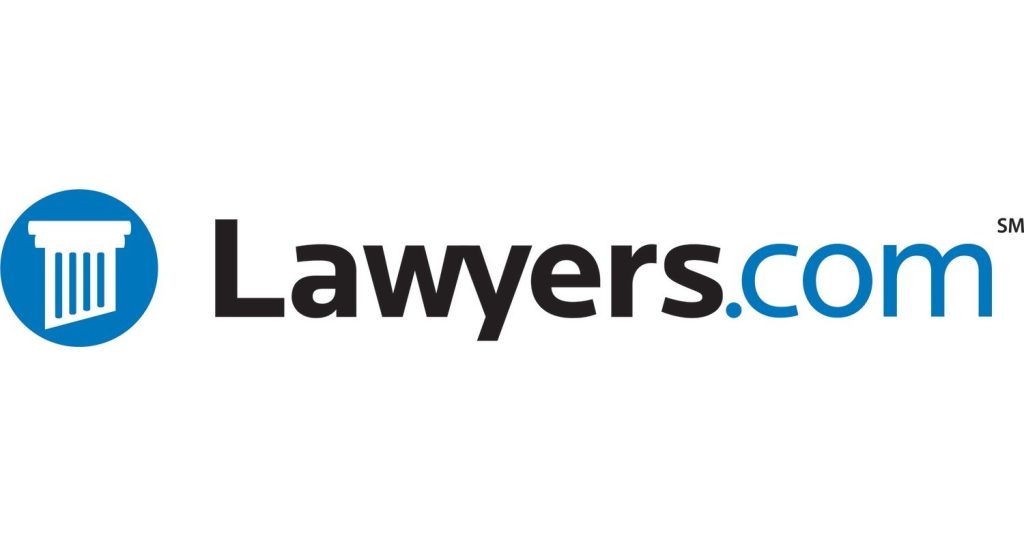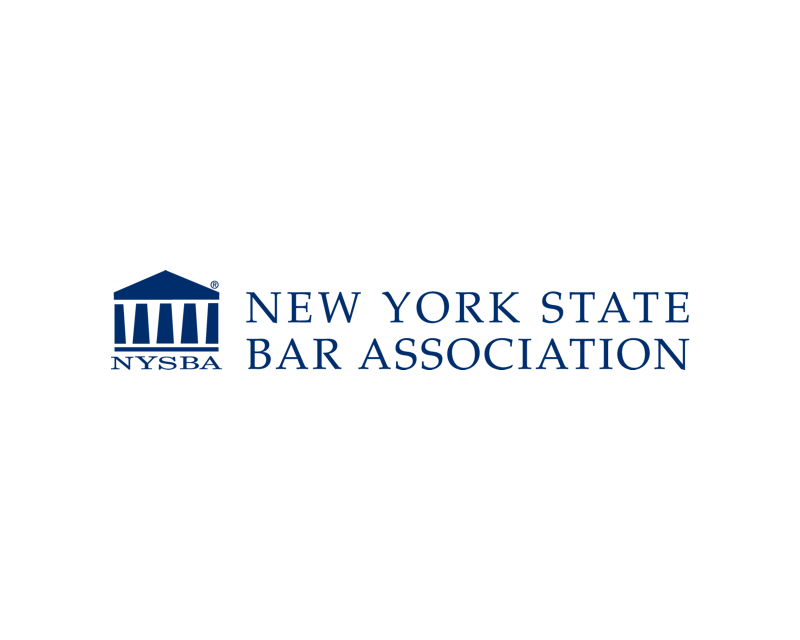The Following People Contributed to This Page
Cindy Cordova is a seasoned legal writer with over seven years of experience crafting clear, informative, and professional content for law firm websites. With a B.A. in English from Trinity Christian College, she combines her strong writing background with a deep understanding of legal topics to help firms connect with their clients through trustworthy and accessible content.
- May 29, 2025
What Is Negligence in Personal Injury Law?
Negligence in personal injury law means someone failed to act with the level of care that a reasonably careful person would use in a similar situation, and that failure caused harm to someone else. In short, it’s a violation of the legal duty to act responsibly, resulting in injury or damage.
The Four Key Elements of Negligence:
- Duty of Care: The defendant had a legal obligation to act with reasonable care toward the plaintiff.
- Breach of Duty: The defendant did not meet that standard of care.
- Causation: The breach directly caused the plaintiff’s injuries.
- Damages: The plaintiff suffered real harm or losses as a result.
Common Examples of Negligence:
- A driver runs a red light and causes a crash.
- A store doesn’t remove ice from its entrance, causing someone to fall.
- A surgeon makes a critical mistake during an operation that harms the patient.
In Plain Terms: When someone acts carelessly and another person gets hurt because of it, that can be considered negligence—and it may form the basis for a personal injury claim.
What Types of Accidents Can Involve Negligence in NYC?
Negligence can apply to many different types of accidents in New York City. When someone fails to act with reasonable care and causes harm to another person, that can be considered negligence. In NYC, this can happen in public places, on the road, at work, or even in someone’s home.
Here are some common types of accidents in NYC that often involve negligence:
- Car Accidents: Car, truck, taxi, and bus accidents are very common in New York City. A driver who runs a red light, texts while driving, or speeds through traffic may be found negligent if their actions cause an injury.
- Pedestrian Accidents: NYC has many busy streets and crosswalks. If a driver fails to yield to a pedestrian in a crosswalk or drives through a stop sign, and a pedestrian is hit, that could be a case of negligence.
- Bicycle Accidents: Cyclists often share the road with cars, especially in bike lanes. A driver who opens a car door into a cyclist’s path (a “dooring” accident) or cuts off a cyclist may be found negligent.
- Slip and Fall Accidents: These can occur in stores, restaurants, apartment buildings, or sidewalks. For example, if a property owner doesn’t clean up a spill, repair a loose stair, or remove ice from a sidewalk, and someone gets hurt, that may be due to negligence.
- Workplace Accidents: Employers in NYC have a duty to keep worksites safe. If a worker is injured because safety equipment was not provided or maintained, that could involve negligence.
- Construction Accidents: Construction is everywhere in New York City. Falls, electrocutions, or being hit by falling objects may occur if safety rules are ignored. Owners and contractors might be held responsible if their carelessness leads to injury.
- Medical Malpractice: Doctors and nurses must follow standard medical practices. If a healthcare professional makes a serious mistake, like misdiagnosing a condition or giving the wrong medicine, they may have acted negligently.
- Nursing Home Abuse or Neglect: If a nursing home fails to care for residents properly—such as not giving medicine or ignoring bedsores—it may be considered negligent care.
- Child Injuries at Schools or Daycares: Staff must watch children closely and provide a safe environment. If a child gets hurt because of lack of supervision or unsafe conditions, it may involve negligence.
- Injuries from Unsafe Products: If a product is poorly made or lacks proper warnings and causes injury, manufacturers or sellers may be responsible for negligence.
In each of these cases, it must be shown that someone acted carelessly and that this carelessness caused the injury. New York City’s busy environment makes these types of accidents more likely, which is why understanding negligence is so important.
If you believe you or a loved one was hurt because of someone else’s actions, it may help to talk with a personal injury attorney. For more information or to schedule a free consultation, you can contact The Orlow Firm at (646) 647-3398.
How Is Fault Determined in a New York Negligence Case?
In a New York negligence case, fault is determined by looking at the actions of each person involved. The court or insurance company decides who failed to act responsibly, and how that failure caused someone else to get hurt. This process involves gathering facts, reviewing evidence, and applying legal standards.
To determine fault, New York courts look at several key questions:
- Did the person have a duty of care? Everyone has a legal duty to act in a way that does not harm others. For example, drivers must follow traffic laws, and property owners must keep their spaces safe.
- Did they breach that duty? A breach means the person failed to act with care. This could be running a red light or failing to fix a broken step in a building.
- Did that breach cause the injury? The careless action must be a direct cause of the harm. For example, if someone slips because of a wet floor with no warning sign, that could show a clear link between the hazard and the injury.
- Were there real damages? Damages can include medical bills, lost income, or pain and suffering. Proof of these losses is key in showing that someone’s actions caused harm.
In many personal injury cases, lawyers, insurance companies, or judges use this process to decide who is legally responsible. In New York, which follows a legal rule called comparative negligence, more than one person can share the blame. That means even if the injured person was partly at fault, they can still recover money, but their award will be reduced by their share of the fault.
Here’s an example: Let’s say a pedestrian is hit by a car while crossing the street in Manhattan. If the driver ran a red light but the pedestrian was looking at their phone and not paying attention, both may be partially responsible. If the pedestrian is found to be 30% at fault, they can still collect damages, but the final amount they receive would be reduced by 30%.
To figure all this out, evidence is crucial. This can include:
- Police reports
- Witness statements
- Photos or videos of the scene
- Medical records
- Expert opinions on how the accident happened
In many New York City cases, proving fault takes a close look at both the facts and the law. Because every situation is different, it’s important to gather as much clear evidence as possible.
If you’ve been injured and are unsure who’s at fault or what your rights are, speaking with a personal injury attorney can help. For a free case review, contact The Orlow Firm at (646) 647-3398. We’ll help you understand your options and how New York’s negligence rules may apply to your case.
What Is Comparative Negligence and How Does It Affect Your NYC Claim?
In New York personal injury cases, comparative negligence means that more than one person can share fault for an accident. This law is important because it affects how much money you can recover if you’re found to be partly responsible for your own injury.
New York follows a system called pure comparative negligence. This means you can still recover damages (money for your injury), even if you were mostly at fault. However, your compensation will be reduced by the percentage of fault assigned to you.
Here’s how it works:
- If you are 0% at fault: You can recover 100% of your damages.
- If you are 25% at fault: You can recover 75% of your damages.
- If you are 75% at fault: You can still recover 25% of your damages.
This rule applies in court cases and also in most settlement discussions. Insurance companies often use the same method when deciding how much to offer in a claim.
Example: Let’s say you were walking in a crosswalk in Brooklyn when a car hit you. But witness reports say you crossed while distracted and not paying attention to traffic. If a jury decides the driver was 70% at fault and you were 30% at fault, and your total damages were $100,000, you would recover $70,000.
What this means for your claim in NYC:
- Your role matters: The court or insurance company will look at your actions and decide if you shared any blame.
- Proof is important: The more evidence that shows the other party was mostly at fault, the stronger your case becomes.
- You can still recover damages: Even if you’re partly to blame, you may still be able to receive compensation.
Because New York uses pure comparative negligence, dealing with shared fault can be complicated. If you think you might be partly responsible for an accident, it’s helpful to get legal advice to understand your options.
To talk about your specific situation and learn how comparative negligence may affect your NYC personal injury case, you can call The Orlow Firm at (646) 647-3398 for a free consultation.
What Evidence Helps Prove Negligence in Court?
To prove negligence in a New York personal injury case, you need solid evidence. This evidence helps show that someone was careless and caused injury as a result. The stronger your evidence, the better your chances of proving your claim in court.
Here are common types of evidence used to prove negligence:
- Accident Reports: Police or incident reports often contain key details, such as who was involved, where the accident happened, and witness statements. In NYC, police reports from the NYPD are often critical in car accident cases.
- Medical Records: These show the injuries you suffered and the treatment you received. They help connect the accident to your physical harm.
- Photos and Videos: Pictures of the accident scene, damaged property, or your injuries can help prove what happened. Video from traffic cameras or nearby buildings in NYC may also show the event clearly.
- Witness Statements: People who saw the accident can help confirm your version of events. Their testimony can be very helpful in court.
- Expert Opinions: In some cases, experts like doctors, engineers, or accident reconstruction specialists can explain how the accident happened or how it caused your injuries.
- Surveillance Footage: In New York City, many businesses and public places have security cameras. Footage from these cameras can be used to show what took place.
- Maintenance or Inspection Records: These can show if a property owner or business failed to fix dangerous conditions, like a broken handrail or wet floor.
Each piece of evidence helps show one of the four elements of negligence: duty, breach, causation, and damages. For example, a broken sidewalk that wasn’t repaired can show a property owner failed to keep their premises safe (a breach of duty).
Gathering the right evidence is a key part of any personal injury case. Victims in New York City are often up against powerful insurance companies or city agencies. The more proof you have, the more likely you are to succeed in your case.
If you’re unsure what evidence you need, or how to get it, The Orlow Firm can help guide you through the process. Call us at (646) 647-3398 for a free consultation.
Can You Sue a Government Agency for Negligence in New York?
Yes, you can sue a government agency for negligence in New York, but the process is different from suing a private person or company. Special rules apply, and tight deadlines must be followed. If you don’t follow these rules exactly, your claim could be dismissed.
Government agencies can include city or state departments such as:
- New York City Transit Authority – for subway or bus accidents
- Department of Sanitation – for accidents caused by garbage trucks
- New York City Housing Authority – for injuries in public housing
- Public schools or school districts – for injuries that happen at school
To sue a government agency, you must take these steps:
- File a Notice of Claim within 90 days: This is a written warning that tells the government you’re planning to sue them. You must file it within 90 days from the date of the injury.
- Wait for the agency to respond: After filing the notice, the agency has 30 days to ask for a hearing. This hearing is like a short interview where you talk about what happened.
- File your lawsuit: After the 30-day waiting period, you can file your lawsuit in court. But you must do this within 1 year and 90 days from the date of the injury.
Keep in mind, suing the government in New York is more complex than filing a claim against a private person. Also, the law might limit how much money you can recover depending on the situation and the agency involved.
Examples of government negligence in NYC may include:
- Potholes or broken sidewalks the city failed to fix
- A city bus hitting a pedestrian
- Public housing with unsafe stairs or missing handrails
- Failure to maintain safe conditions in public parks or schools
Because of the rules and deadlines, it’s important to act quickly if you believe a government agency’s carelessness caused your injury. Gathering evidence early and following the correct steps can make a big difference in your case.
If you have questions about a possible claim against a government agency in New York City, call The Orlow Firm at (646) 647-3398 for a free and confidential consultation.
How Long Do You Have to File a Negligence Claim in NYC?
In New York City, you generally have a limited amount of time to file a negligence claim. This time limit is known as the statute of limitations. If you miss this deadline, you may lose your right to recover compensation.
For most personal injury cases in New York, the statute of limitations is three years from the date of the accident or injury. This means you usually have three years to file a lawsuit in civil court. This rule applies to many types of negligence cases, including car accidents, slip and falls, and workplace injuries.
However, there are exceptions and special rules that could change the deadline. Here are some examples that may apply in New York City:
- Claims Against a Government Agency: If the injury involves a city or state agency (like the NYPD or NYC Transit Authority), you usually must file a Notice of Claim within 90 days of the incident. After that, you typically have only one year and 90 days from the date of the accident to file a lawsuit.
- Claims Involving Minors: If the injured person is under 18, the clock may not start running until they turn 18. But you should not wait. Waiting too long can make it harder to gather evidence and prove your case.
- Medical Malpractice: These cases may follow different time rules, often shorter than general negligence cases. Speak with an attorney promptly if you’re unsure.
Filing on time is critical. If you wait too long, the court may dismiss your claim no matter how strong your case is. Evidence can also be lost or harder to collect over time.
If you or a loved one has been injured due to someone else’s negligence in New York City, it’s important to act quickly. To learn more about your rights and the correct time limits that apply to your situation, call The Orlow Firm at (646) 647-3398 for a free, confidential consultation.
Frequently Asked Questions About Negligence Cases in NYC
- What is negligence in a personal injury case? Negligence means someone failed to act with reasonable care, and that failure caused another person’s injury. In legal terms, it’s when someone acts carelessly or does not act when they should, leading to harm.
- Can I still file a claim if I was partially at fault? Yes. New York uses a rule called comparative negligence. This means you can still recover money even if you were partly at fault. However, your total compensation may be reduced based on your share of the blame.
- How is negligence proven in court? To prove negligence, you must show four things:
- The other party had a duty to act carefully.
- They failed in that duty (this is called a breach).
- Their failure caused your injury.
- You suffered harm or losses (called damages).
- What types of damages can I claim in a negligence lawsuit? You can usually claim:
- Medical bills
- Lost wages
- Future treatment costs
- Pain and suffering
- Emotional distress
The final amount depends on your injuries and how the accident affected your life.
- Is there a time limit to file a negligence claim in NYC? Yes. In most cases, you have three years from the date of the injury to file a personal injury lawsuit in New York. This is called the statute of limitations. Some exceptions apply, like if the claim is against the city or a government agency. Those cases can have much shorter deadlines.
- Can I sue the City of New York for negligence? Yes, but it’s more complicated. You must file a special notice, called a Notice of Claim, within 90 days of the incident. Failing to file this notice on time could prevent you from suing. If you think a city employee or department caused your injury, speak with a lawyer right away.
- What if there were no eyewitnesses to my accident? Even if no one saw the accident, you may still have a case. Other types of evidence, like photos, videos, medical records, and expert opinions can help prove negligence.
- Do I need a lawyer for a negligence case? While you aren’t required to have a lawyer, personal injury cases can be complicated. Insurance companies may try to deny or reduce your claim. Having a lawyer can help protect your rights and improve your chances of getting fair compensation.
- How much does it cost to hire a personal injury lawyer? Most personal injury lawyers in New York, including The Orlow Firm, work on a contingency fee basis. This means you don’t pay any upfront fees. The lawyer only gets paid if you win or settle your case. If you’re unsure what this means for your situation, you can always ask during your free consultation.
If you have more questions about negligence cases in New York City, The Orlow Firm is here to support you. Call us today at (646) 647-3398 for a free, confidential consultation.
Contact The Orlow Firm for a Free Consultation About Your Negligence Case

If you or a loved one has been injured due to someone else’s negligence in New York City, it’s important to understand your legal options. The Orlow Firm offers free, no-obligation consultations to help you explore whether you may have a personal injury claim. Speaking with an attorney can help clarify your rights and the steps you need to take to protect them.
The Orlow Firm is here to guide you through each step of your negligence case. We will listen to your story, explain your legal rights clearly, and outline your next steps. During your free consultation, you can:
- Find out if you may have a valid claim
- Learn what evidence is needed in a negligence case
- Understand how New York’s “comparative negligence” rules may affect your case
- Get answers to your questions, without pressure or commitment
If you’d like to speak with a personal injury attorney about your negligence case in New York City, contact The Orlow Firm today. Call us at (646) 647-3398 to schedule a free and confidential consultation. We’re here to help you understand your options and make informed decisions about your future.
The Following People Contributed to This Page
Cindy Cordova is a seasoned legal writer with over seven years of experience crafting clear, informative, and professional content for law firm websites. With a B.A. in English from Trinity Christian College, she combines her strong writing background with a deep understanding of legal topics to help firms connect with their clients through trustworthy and accessible content.










